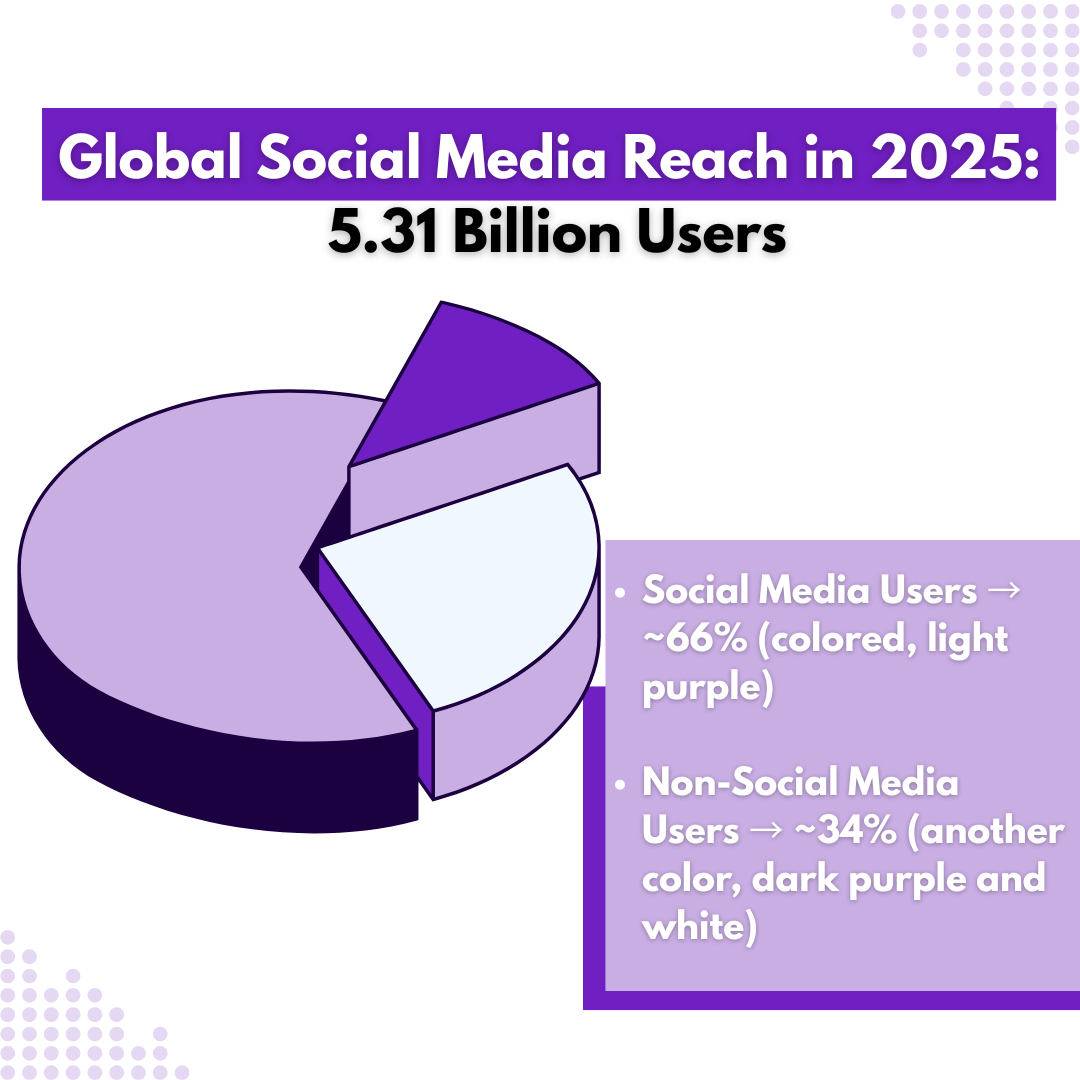Introduction
With over 5.31 billion social media users globally, social media marketing has become a vital factor in building a strong brand presence online. Being socially savvy and active on social media offers many advantages: boosting brand visibility, building credibility, connecting directly with customers, personalizing the brand experience.
While organic social media growth demands ongoing hard work, effort, and patience, the long-term potential is worth it.
In this blog post, I’ll uncover 7 of the biggest social media mistakes that could be stunting your growth — and how you can avoid them.
Lack of Content Strategy

A lack of content strategy often leads to indefinite goals, tight resources, and missed opportunities. It triggers deeper issues like inconsistent posting and irrelevant content updates, making it harder to connect authentically with your audience.
In fact, 42% of B2B marketers say their content marketing strategy is ineffective, largely due to unclear content goals. Thus, having a clear content strategy is crucial for building a powerful social media presence. To succeed, consider using social scheduling tools like Buffer and SocialPilot.
Pro Tip: For beginner content creators, I highly recommend Buffer, which offers a starter plan at just $5 per month — including unlimited posts for one channel!
Therefore, if you haven’t already started crafting your content strategy, begin brainstorming and implementing one as early as possible!
Bonus Tip:
Use free content planning and mind-mapping tools like Notion and MindMeister to organize your content ideas and create engaging content.
Not responding to comments or messages

Social media is a two-way street, it’s not just about posting content- it’s about building authentic connections with social community online and having conversations. Thereby, a low user engagement rate is a bad sign and isn’t appealing to your audience who takes time in commenting, liking and sharing your content. Consistently acknowledging your audience builds trust, fosters loyalty, and encourages more meaningful interactions — all of which are essential to building a social media presence for brands online.
Using low-quality images or videos

Content creators and businesses should prioritise high-resolution images or videos on digital platforms, as low-quality-images can lead to reduced social media engagement, causing users to scroll past the content. This not only negatively impacts brand perception, especially for businesses, but also results in lower click-through rates and fewer post impressions.
In a world where first impressions matter, poor-quality visuals can create an impression of unprofessionalism and a lack of attention to detail, ultimately damaging your brand’s reputation. What’s more, according to MDG Advertising, 67% of customers consider image quality “quite critical” when making online buying decisions.
Pro Tip: To ensure your social media posts load faster and sharper, always compress your images before uploading. Even if you are using JPEG or PNG, the large file size can slow down loading times. Use free image optimiser like TinyPNG, ImagOptim or Squoosh to reduce your picture size without losing visual quality.
Not analysing social media metrics

If you stop analysing social media metrics, you are delaying a social media advertising campaign’s effectiveness. This prevents you from gaining audience insights, figuring out what content works best, and boosting your campaigns. Without performance tracking, it is challenging to determine the content that resonates and whether your content strategy needs improvements.
As claimed by Sprout Social, you need to track the following social media metrics to decide on your social media growth:
- Awareness metrics (impressions, reach, and video views)
- Social media engagement metrics (post engagement rate, likes, comments, retweets, reactions, shares, and video completion rate)
- Other essential metrics (share of voice, references, conversions, and response rate and time).
Thereby, analysing these metrics, you will have a clear vision of your audience behaviour and engage in content repurposing and content strategies accordingly.
(Finishing this blog post by the end of this week! My Apologies!)

No responses yet